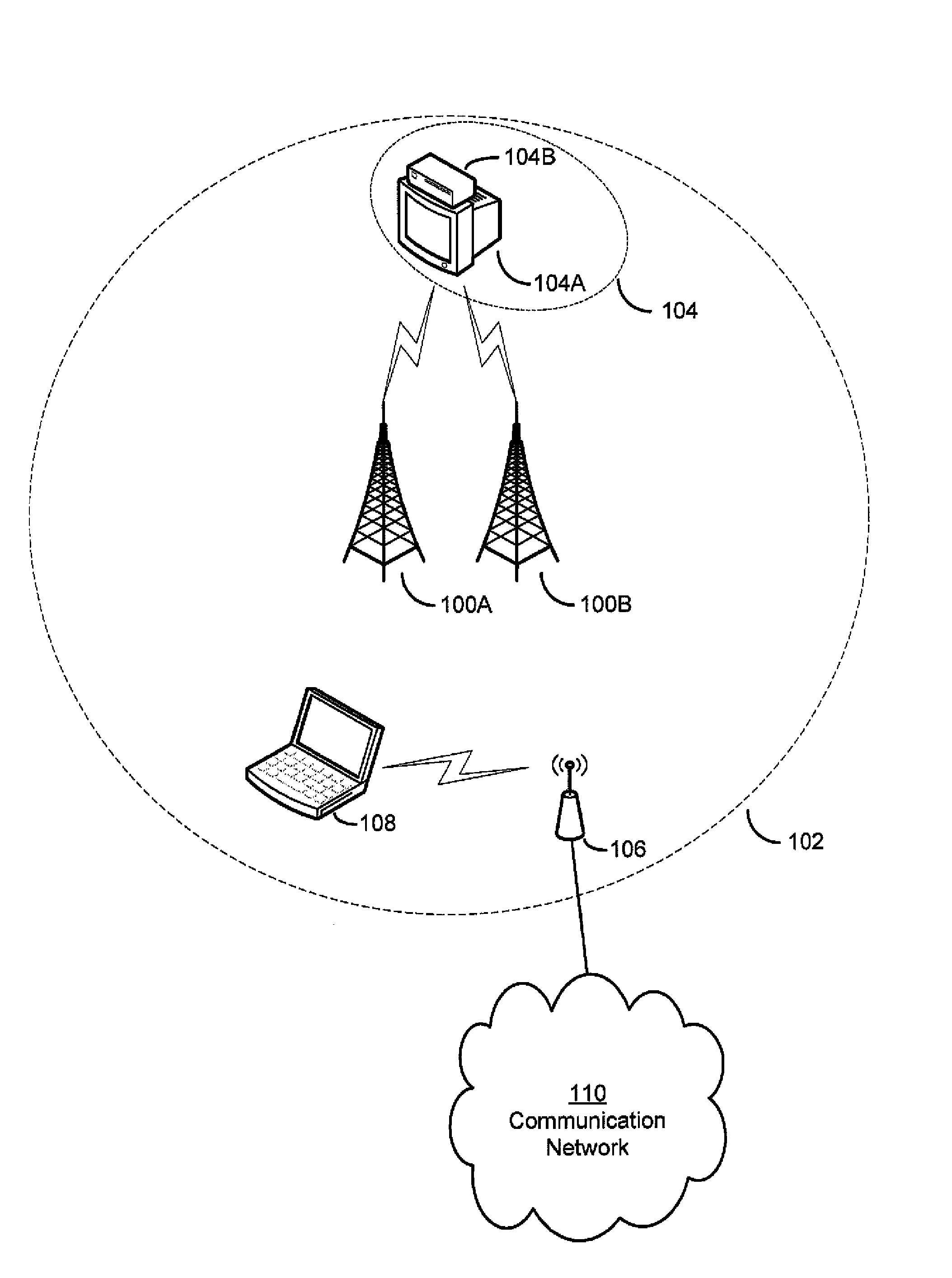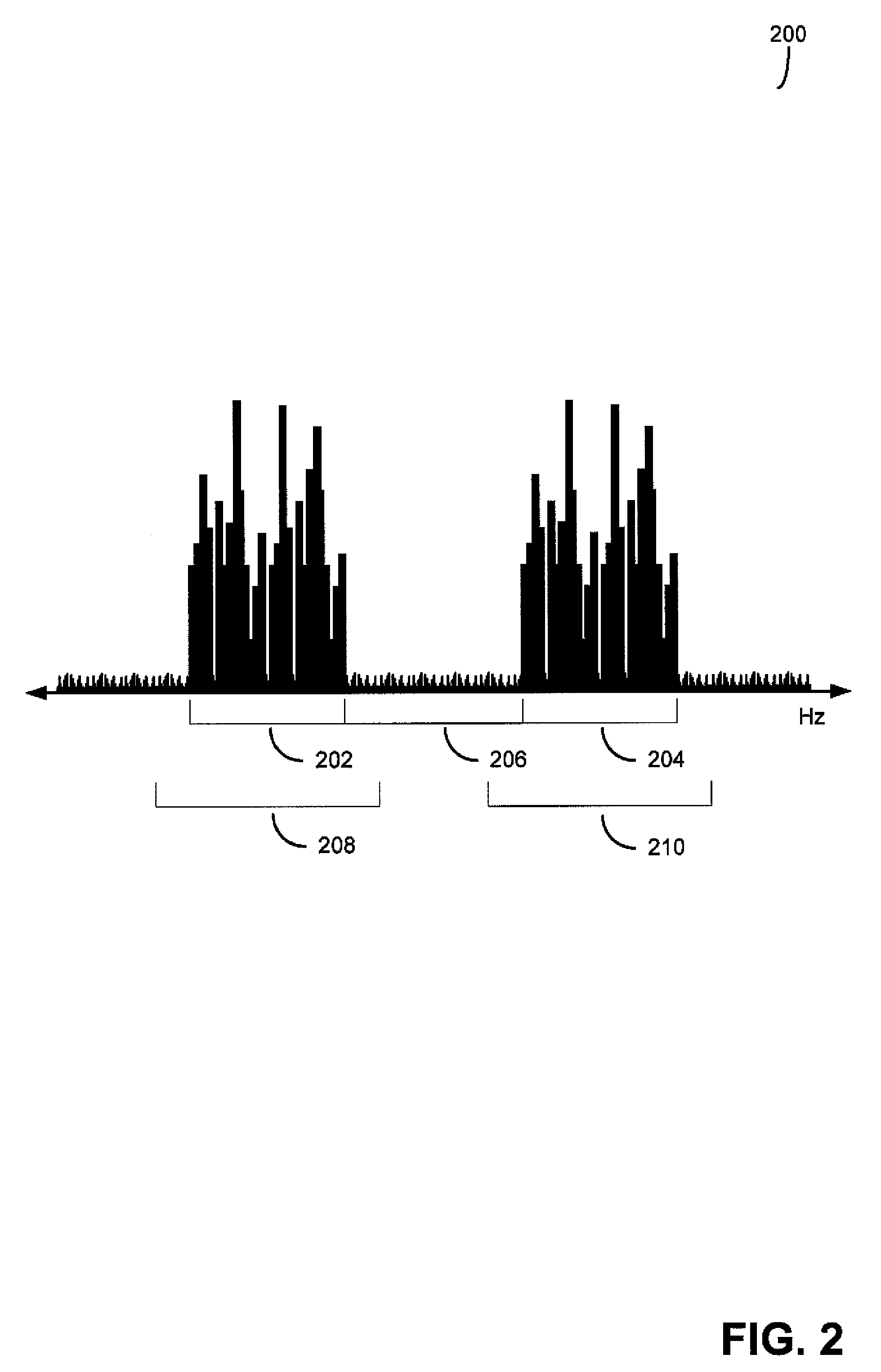Channel reuse with cognitive low interference signals
a low interference, channel-based technology, applied in the direction of link quality based transmission modification, electrical equipment, radio transmission, etc., to achieve the effect of a large spectrum
- Summary
- Abstract
- Description
- Claims
- Application Information
AI Technical Summary
Benefits of technology
Problems solved by technology
Method used
Image
Examples
Embodiment Construction
[0021]Applicants have recognized and appreciated that existing techniques for sharing a frequency spectrum, like Detect and Avoid (DAA), are either not effective at allowing a secondary user to use a channel in a licensed band that is reserved for a primary user, or do not provide a desired level of access to the licensed band for secondary users.
[0022]Further, Applicants have recognized and appreciated that improved approaches to avoid disruption to primary users will likely be required to persuade administrative agencies that regulate wireless transmissions—such as the Federal Communication Commission (FCC) of the United States—to permit transmission of data by secondary users, even in unused or underused portions of the licensed spectrum.
[0023]Applicants have recognized and appreciated that improved techniques for preventing interference may be implemented by developing new signals to be transmitted by a secondary user based on the impact such new signals have on receipt of infor...
PUM
 Login to View More
Login to View More Abstract
Description
Claims
Application Information
 Login to View More
Login to View More - R&D
- Intellectual Property
- Life Sciences
- Materials
- Tech Scout
- Unparalleled Data Quality
- Higher Quality Content
- 60% Fewer Hallucinations
Browse by: Latest US Patents, China's latest patents, Technical Efficacy Thesaurus, Application Domain, Technology Topic, Popular Technical Reports.
© 2025 PatSnap. All rights reserved.Legal|Privacy policy|Modern Slavery Act Transparency Statement|Sitemap|About US| Contact US: help@patsnap.com



